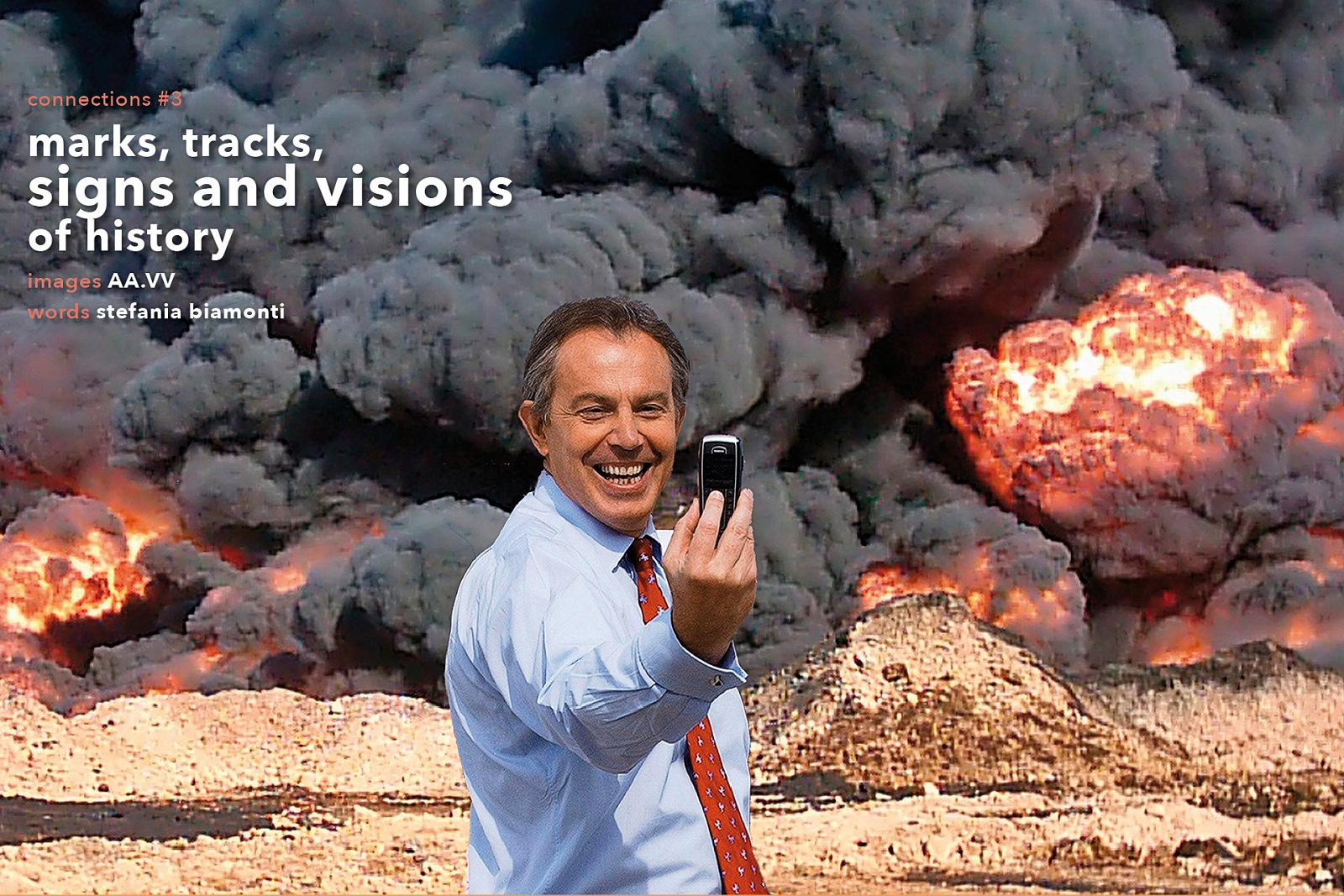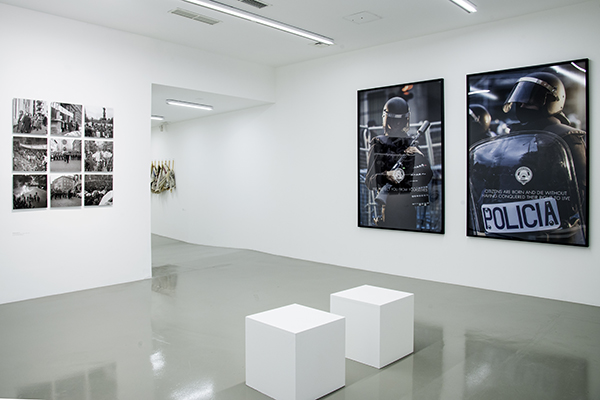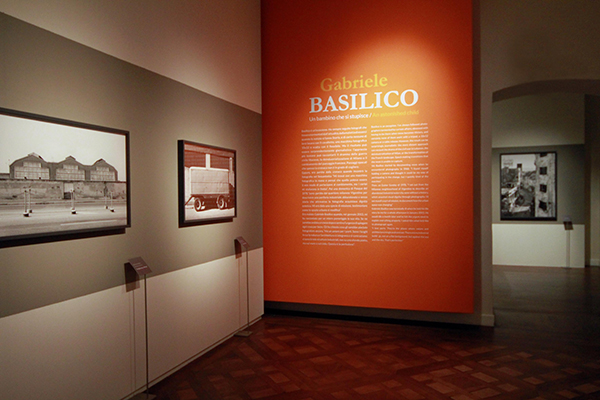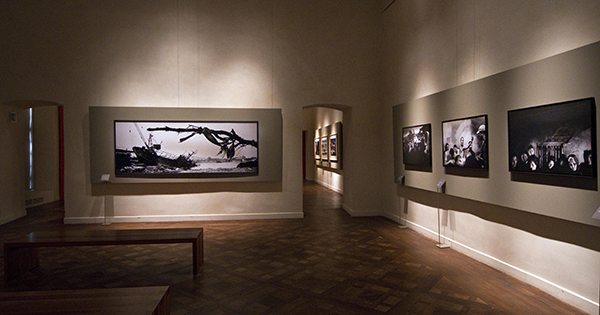When we look at any light source with a naked eye, closing our eyelids we have the sensation that its shiny, dazzling mark continues to persist on our retina despite the disappearance of the light stimulus that produced it. It is an optical illusion, the perceptual kind, generated by the physiology of the eye and known by the name of
ghost image or afterimage.
Something conceptually very similar also happens though, when we look at an image, it affects us deeply in form, content and sequences. Let's think of, for example, the images of war. With the help of our memory – often seduced by a combination of very little
studium and punctum, to use a terminology dear to Roland Barthes – in fact these images continue to remain etched in our minds even after their vision has ceased, affecting our way of how to read and interpret the reality of the facts of which they carry traces.
Starting with this assumption, and then extending to excess the meaning of
afterimage, Valeria Mancinelli, Chiara Nuzzi and Stefania Rispoli have tried to compose a speech in parallel to investigate the potentiality of the public representation of the images of war and the persistence that these have in building collective reality. This led to the project Afterimage. Representations of the conflict, which is currently on display at the Galleria Civica di Trento.
Winner of the CXC Call for Curators, the national competition for curators under 35 called by Mart last autumn, the project explores the relationship between images and conflict in recent times, offering a moment of reflection on the status and on the production of images that tell of war, apparently always freer and autonomous in the forms and methods of use.
|
|
The point of departure is that today, in an era dominated by the so-called
permanent war, the overload of information and where it is possible to reach virtually almost every part of the world, the circulation of these images – embedded in a variety of contexts of use, sometimes very different from each other – and the statute of truthfulness of what is shown plays a decisive role in the description of contemporary scenarios and in the formation of individual ideas and/or social, so much so often to determine balances, inequalities, inclusions and exclusions.
Through an itinerary that contemplates videos, photographs and installations, and involving artists distant in age, as well as in cultural and geographical backgrounds, embracing a time period of over more than sixty years, the exhibition then questions what role these images play in the collective perception of a condition of war or peace. It asks, in other words, how visual storytelling influences the public opinion today, building consent or dissent around certain military operations and, with them, a certain definition of reality and truth.
All this to try to respond to the urgent need to create and provide new critical tools to analyse and understand an increasingly more complex reality in which, especially in case of conflict, the persuasive power of representation seems to acquire an as yet unknown magnitude.
The exhibition is part of Mart/Great War 2014, the extensive cultural programme conceived by Mart on the centenary of the First World War and still ongoing between Rovereto and Trento, respectively, in the spaces of the Mart, Casa Depero and the Galleria Civica.
[ Stefania Biamonti ]
|

 home
cover ▼
opinions
news ▼
portfolio
post.it
post.cast
video
ongoing
thematicpaths
googlecards
FPtag
home
cover ▼
opinions
news ▼
portfolio
post.it
post.cast
video
ongoing
thematicpaths
googlecards
FPtag








 The authors at the exhibition - Bisan Abu-Eisheh, Mohamed Bourouissa, Stefano Cagol, Mircea Cantor, Anetta Mona Chis¸a & Lucia Tká ová, Leone Contini, Marco Dalbosco, Camilla de Maffei, Democracia, Harun Farocki, Massimo Grimaldi, Adelita Husni-Bey, Lamia Joreige, Kennardphillipps, Thomas Kilpper, Aung Ko, Nikki Luna, Francesco Mattuzzi, Pietro Mele, Aditya Novali, Ahmet Ö üt, Fabrizio Perghem, Martha Rosler, Pietro Ruffo, Giorgio Salomon, Cindy Sherman, Abigail Sidebotham, Eyal Sivan, Hito Steyerl, ZimmerFrei.
The authors at the exhibition - Bisan Abu-Eisheh, Mohamed Bourouissa, Stefano Cagol, Mircea Cantor, Anetta Mona Chis¸a & Lucia Tká ová, Leone Contini, Marco Dalbosco, Camilla de Maffei, Democracia, Harun Farocki, Massimo Grimaldi, Adelita Husni-Bey, Lamia Joreige, Kennardphillipps, Thomas Kilpper, Aung Ko, Nikki Luna, Francesco Mattuzzi, Pietro Mele, Aditya Novali, Ahmet Ö üt, Fabrizio Perghem, Martha Rosler, Pietro Ruffo, Giorgio Salomon, Cindy Sherman, Abigail Sidebotham, Eyal Sivan, Hito Steyerl, ZimmerFrei.







 The authors at the exhibition - Abbas, Gabriele Basilico, Elliott Erwitt, Paul Fusco, Don McCullin, Steve McCurry, Josef Koudelka, Paolo Pellegrin, Sebastião Salgado, Alex Webb.
The authors at the exhibition - Abbas, Gabriele Basilico, Elliott Erwitt, Paul Fusco, Don McCullin, Steve McCurry, Josef Koudelka, Paolo Pellegrin, Sebastião Salgado, Alex Webb.